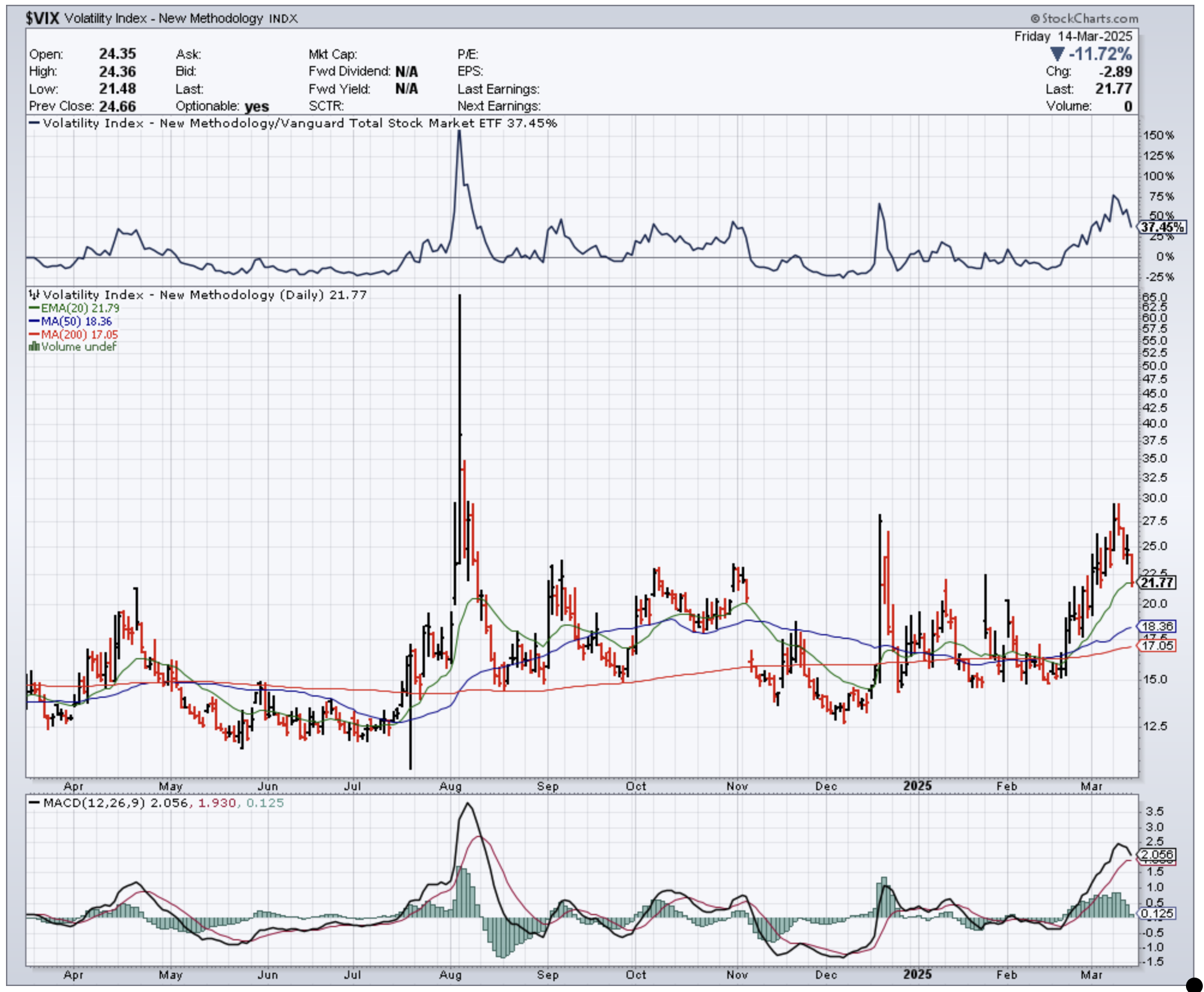VIX Drops 11.72% As Market Fear Eases, But Uncertainty Lingers
- This topic has 4 replies, 2 voices, and was last updated 1 month ago by .
-
Topic
-
The VIX (Volatility Index), often referred to as the “fear gauge,” provides critical insights into market sentiment and expectations of short-term volatility.
On Friday, the VIX fell 11.72% to 21.77, signalling a notable decline in investor anxiety.
This drop suggests that market participants are growing less concerned about immediate risks, potentially due to improving economic conditions, stabilising corporate earnings, or growing confidence in the Federal Reserve’s upcoming policy decisions.
However, despite this decline, the VIX remains elevated compared to its 52-week low of 10.62, indicating that some level of uncertainty still lingers in the market.
This could be attributed to ongoing geopolitical tensions, trade policy uncertainties, or concerns about inflation and interest rate trajectories.
Historically, the VIX tends to spike during periods of market stress, such as the 2008 financial crisis or the COVID-19 pandemic, and its current level suggests that investors are not yet fully at ease.
For investors, the VIX serves as a valuable tool for assessing risk appetite and market conditions.
A lower VIX often correlates with bullish sentiment and a preference for riskier assets like equities, while a higher VIX typically reflects risk aversion and a flight to safe havens like bonds or gold.
The recent decline could signal a shift toward risk-on behaviour, but the elevated baseline suggests caution is still warranted.
Looking ahead, the VIX’s trajectory will likely hinge on key developments such as Fed policy announcements, earnings reports, and macroeconomic data.
Investors should monitor the index closely, as sudden spikes could indicate renewed market stress, while further declines might confirm a more stable outlook.
Do you think the VIX’s drop marks a turning point for market confidence, or is it just a temporary lull in volatility? 🤔📈
